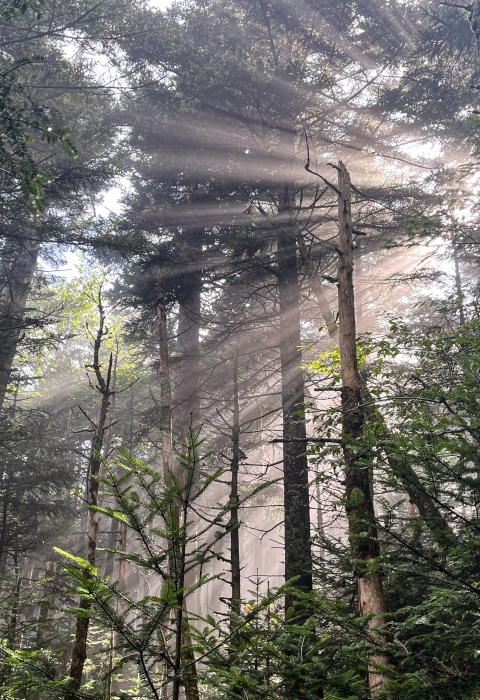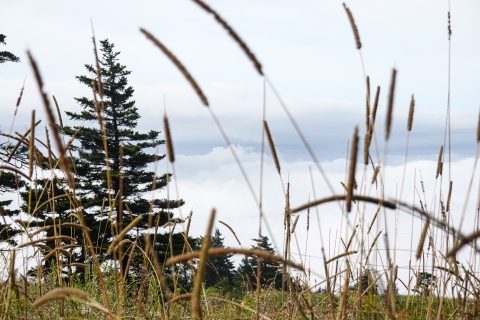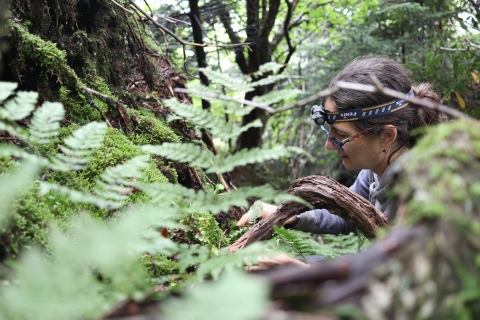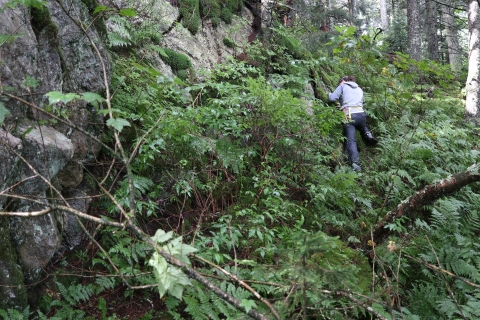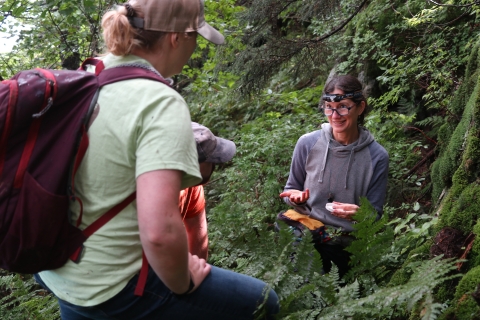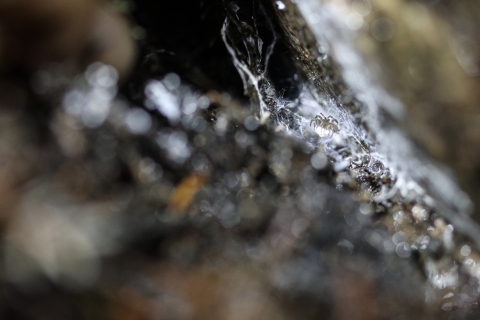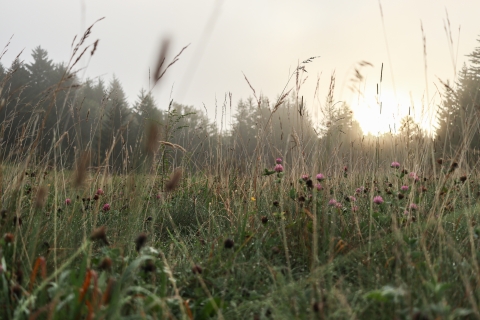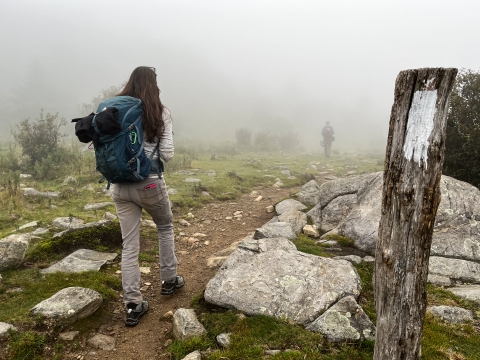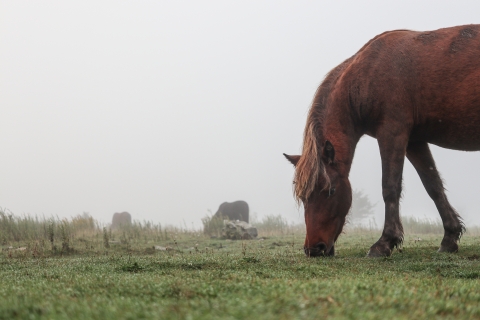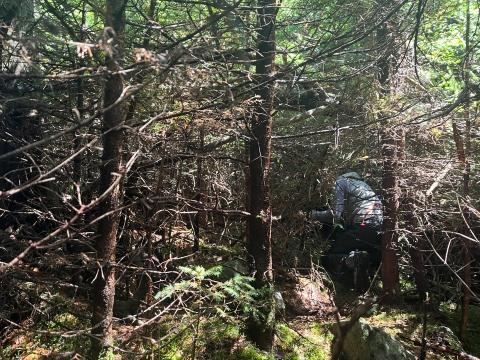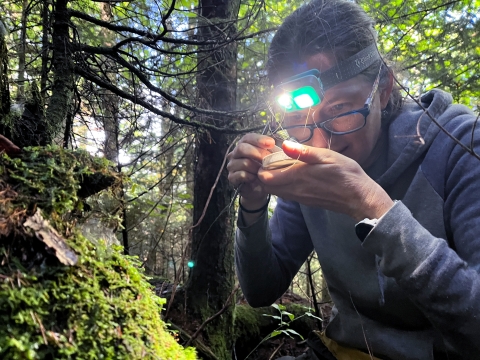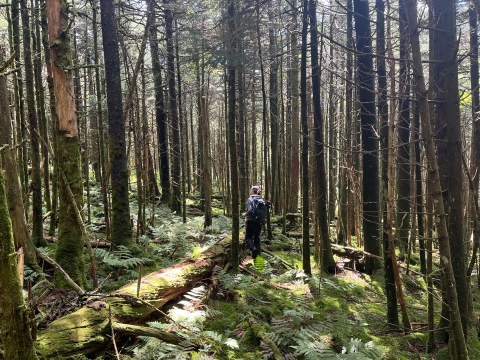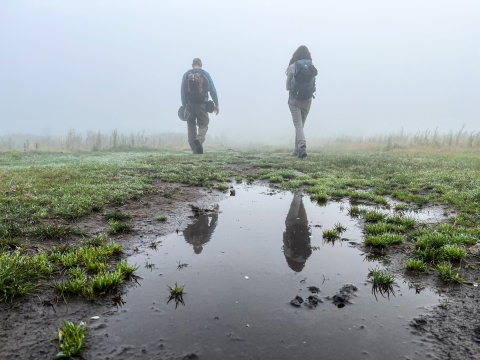At 5,729 feet, Mt. Rogers is the highest point in Virginia and the center of a high-elevation area reaching from Whitetop Mountain to the west to Grayson Highlands to the east – the northernmost southern Appalachian sky island. Due to the climate that comes with their elevation, the highest areas of Southern Appalachia are home to plant communities - with signature red-spruce/Fraser fir forests - and accompanying animal communities found nowhere else in the world. These communities are perched on the top of the south’s highest peaks, prompting the name sky islands.
One animal found only on these sky islands is the endangered spruce-fir moss spider, discovered in 1923 at Mount Mitchell, N.C. and coming in at about the diameter if a pencil eraser.
In the world of wildlife biologists, there are ample bird specialists. Ample large mammal specialists. The number of people with experience and working knowledge of the spruce-fir moss spider can likely be counted on a single hand. Sue Cameron is the U.S. Fish and Wildlife Service’s spruce-fir moss spider expert and she’s in the second year of a six-year effort to help provide the clearest picture ever had of the spider’s well-being, while using her field outings to teach other biologists about the spider and how to search for it.
In 2021, Clemson University’s Catherine Jachowski developed a long-term monitoring plan for the spider calling for scouring six 10-acre plots each year for six years. 36 plots total, 360 acres searched. Over two days in late August, using Grayson Highlands State Park as a launching point, Cameron and fellow staff from the Service’s Asheville Field Office searched three plots in the Virginia highlands - one on Whitetop Mountain and two on the shoulder of Mt. Rogers.
Day 1 was an easy drive to the top of Whitetop Mountain where the team rendezvoused with Brittany Phillips and Michael Bussiere from the U.S. Forest Service. It was an easy and fruitful day, with two spiders found, each with an egg sac, providing Phillips and Bussiere their first glimpse of the rare spider.
On Day 2, the Service team turned its sights on Mt. Rogers itself, a peak where no spruce-fir moss spiders had ever been found despite ample habitat – puzzling biologists. The team was joined by Brian Bockhahn, perhaps the second most knowledgeable working professional when it comes to the spider and author of the Arachnids of North Carolina website. An education specialist with the North Carolina State Parks, which has the endangered spider at Mount Mitchell and Grandfather Mountain State Parks, Brian was able to cross into Virginia for the day, bringing his expertise to bear on the search. After hiking 4.5 miles along the Appalachian Trail to spend six hours bushwhacking 20 steep acres covered in dense vegetation, no spruce-fir most spiders were found, and the mystery of their absence persists. The spiderless second day ended with a 4.5-mile hike out, a three-hour drive home, and a quiet but swift unloading of the truck beneath the street lights in an empty office parking lot.
